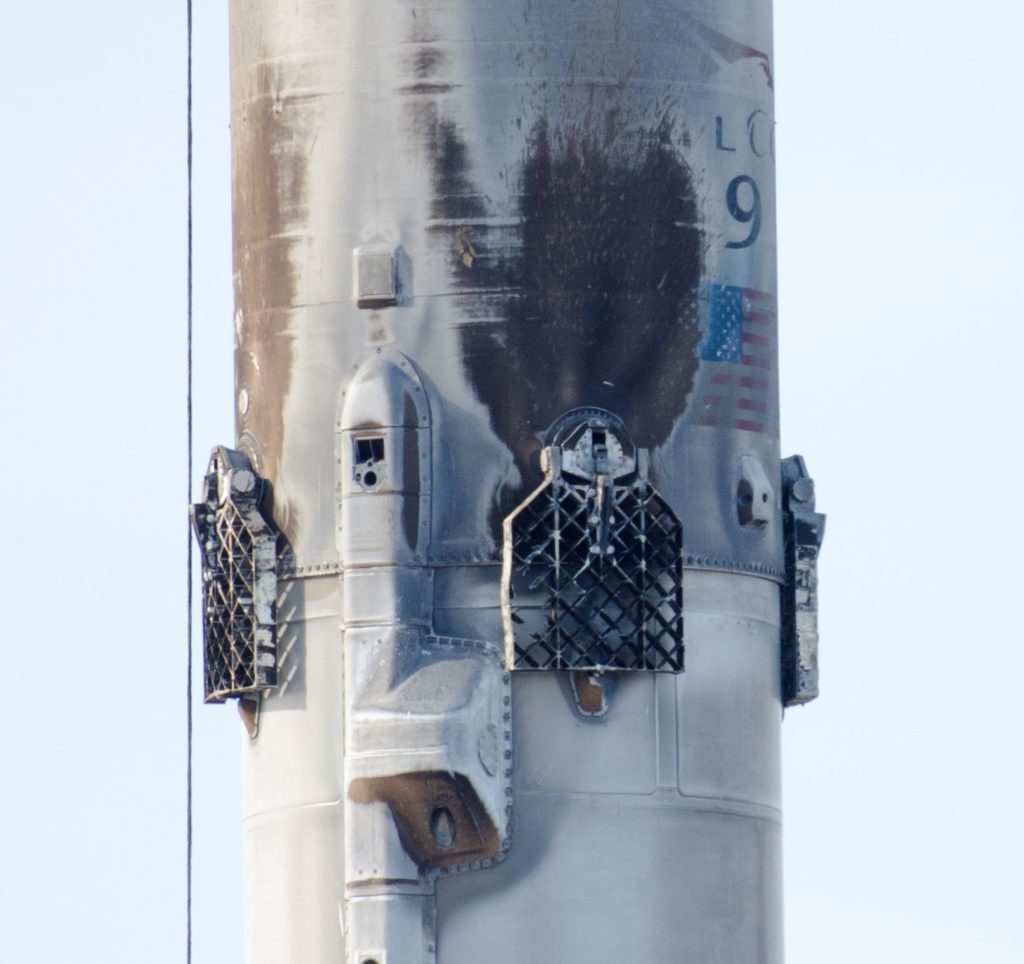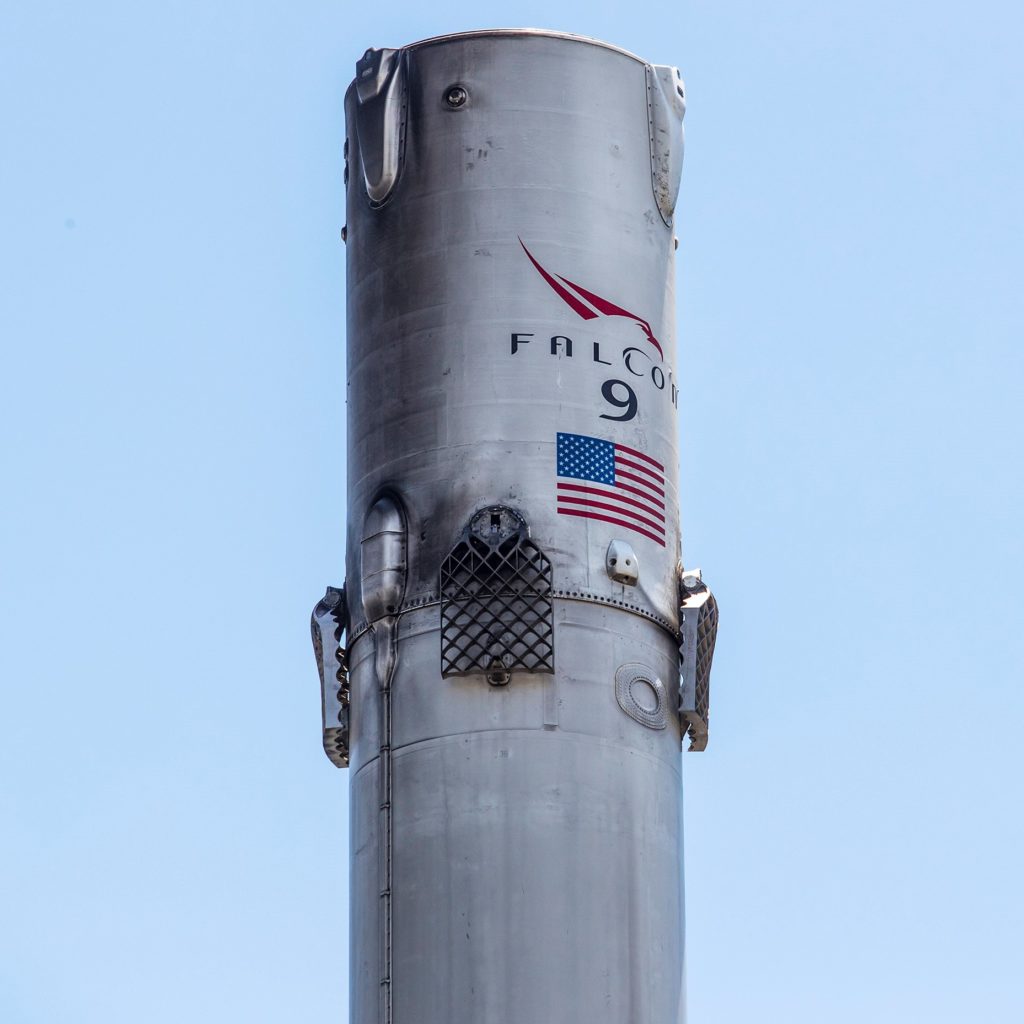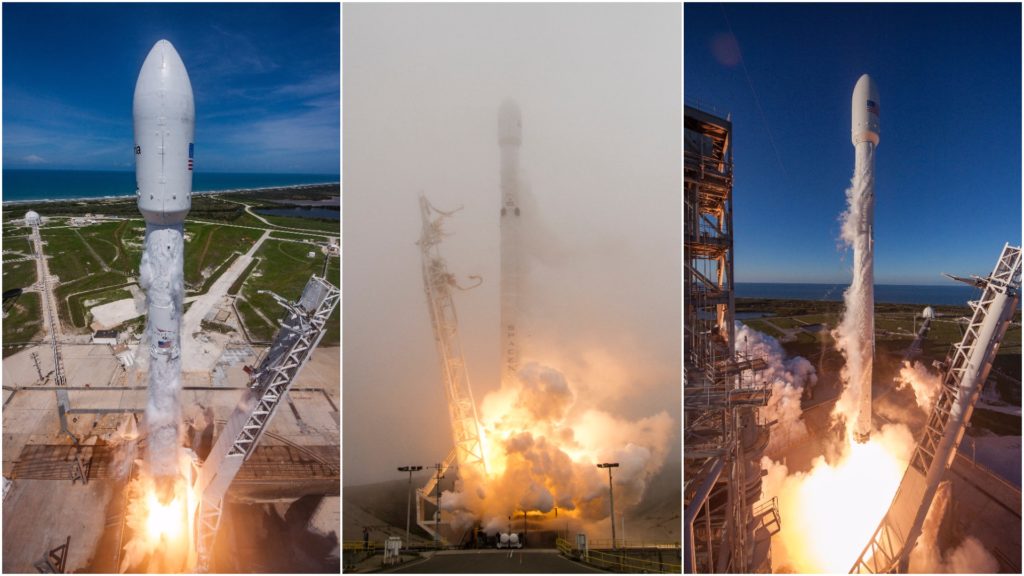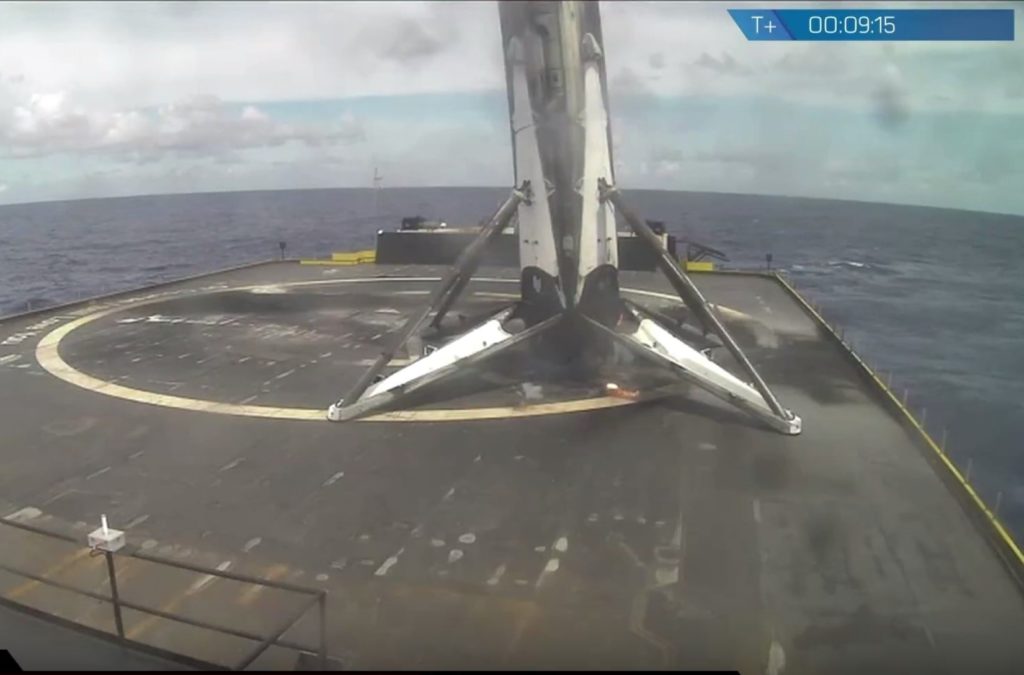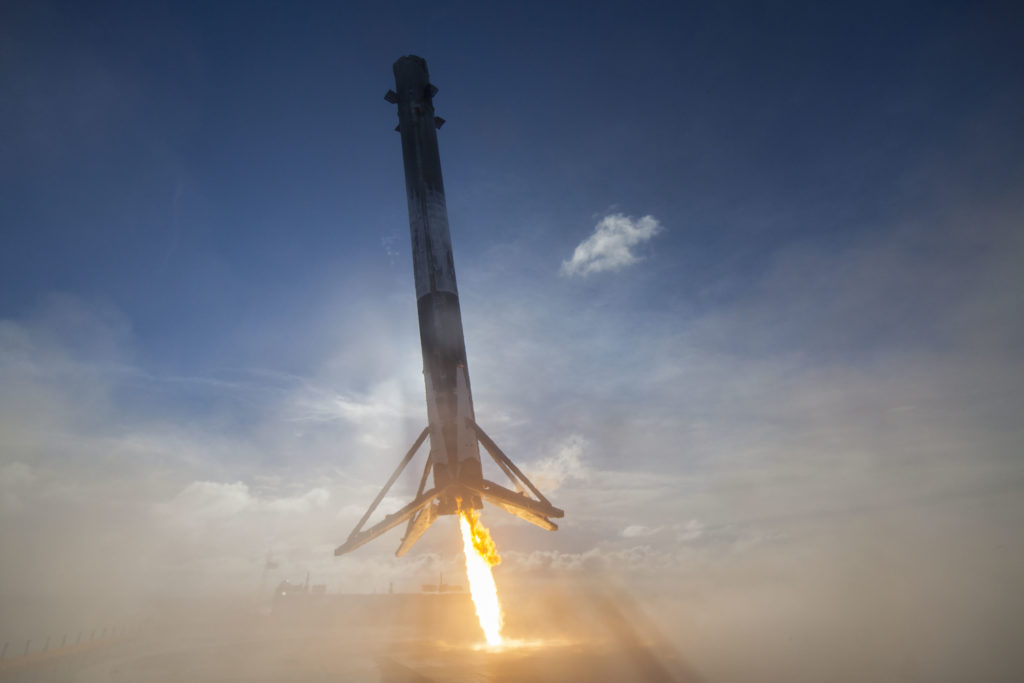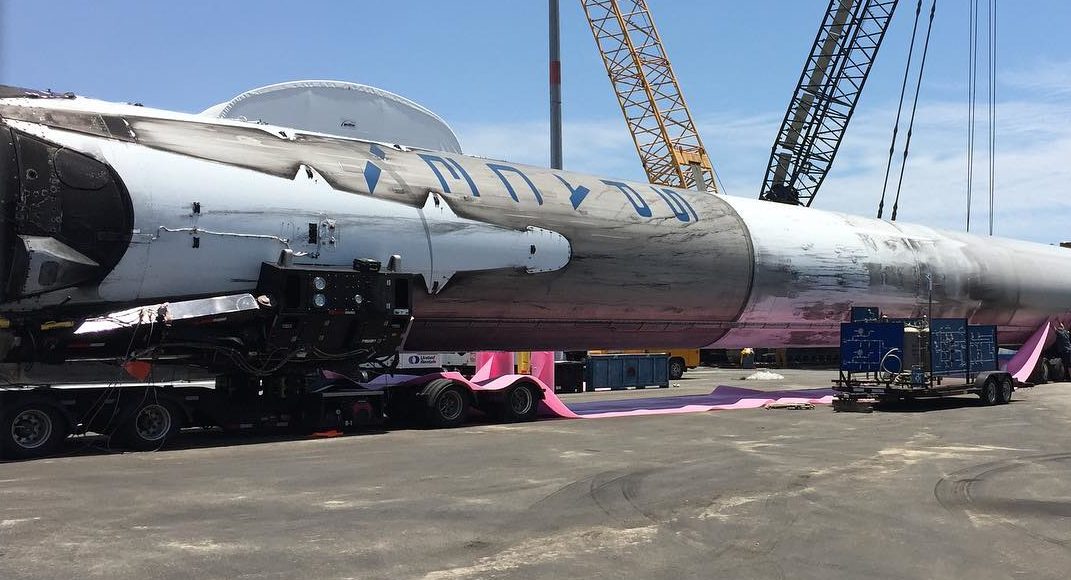
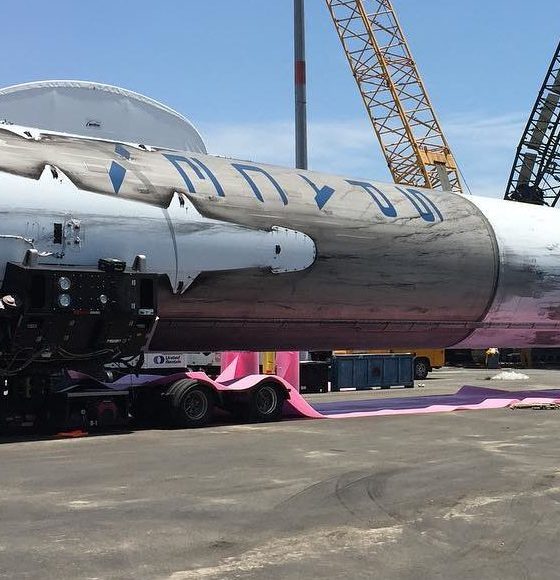
News
SpaceX advances reuse efforts as recovery of two boosters nearly complete
Three launches, two recoveries, two coasts
Just over two weeks ago, SpaceX accomplished its most impressive feat of cadence yet, both launching and recovering two separate Falcon 9s in approximately 49 hours.
Two weeks later and two days after conducting a third launch in 13 days, residents of Los Angeles, California and Cape Canaveral, Florida both coincidentally reported that the two recovered boosters from the previous two launches had both gone horizontal and appeared ready for transport. After docking in Port Canaveral for the second time, Core 1029 was seen entering SpaceX’s LC-39A integration facilities on Friday. The booster on the West coast, 1036, was loaded aboard one of the company’s converted Falcon 9-carrying semi-trucks, likely for transport to SpaceX’s Hawthorne manufacturing facilities, or possibly on a direct route to McGregor, Texas for refurbishment and testing.
https://www.instagram.com/p/BWQSPOgF67i/
This is exciting for several reasons. Foremost, 1036 is a likely candidate for reuse, and SES-10 sets a firm precedent for this. The first commercial reuse of an orbital-class launch vehicle, Falcon 9’s second stage and SES-10 payload launched on a first stage that had flown five months before during the successful launch of Iridium’s first ten NEXT satellites.
Given the potential impact of failure on the adoption of reuse as a commercial standard, SpaceX likely approached the refurbishment of the vehicle with an end-goal balanced between perfection and realism. The orbit of Iridium’s NEXT constellation is the reason the booster was chosen for the first operational reuse: their low Earth polar orbits require Falcon 9’s first stage to undergo a smaller amount of heating and general hypersonic battering when compared with SpaceX’s more common commercial launches of geostationary satellites.
- The central aluminum grid fin of 1029 features a dramatic lack of several vanes, likely melted off during the intense heat of reentry. Expending older boosters is likely helping SpaceX learn how to preserve Block 5 rockets for multiple high-energy missions. (Reddit, u/thedubya22)
- SpaceX will move to titanium grid fins in the future, first trialed during 1036’s launch of Iridium-2. (SpaceX)
A sound example of the extremes of Falcon 9’s suborbital reentry heating can be found in the recovery of 1029, which launched BulgariaSat-1 to a supersynchronous transfer orbit. Noted before the launch by Musk over his favored medium, 1029’s recovery was expected to be the most energetic yet, and thus success was less than certain. The results of this additional heating were obvious, and keen observers rapidly noted that the most stressed of 1029’s aluminum grid fins appeared to be considerably deformed from the stage’s energetic return to OCISLY, completed melted through in places. Considering the debut of more robust titanium grid fins aboard the launch of Iridium-2 only two days later, the quasi-destruction of one of 1029’s grid fins was somewhat fitting. 1036’s titanium grid fins looked barely worse for wear after a landing that was also deemed aggressive due to Just Read The Instructions having to avoid bad weather just before the landing.
Stirring explorations of the limits of recovery aside, both boosters are now ready to be examined and refurbished ahead of one or even two additional launches. SpaceX’s willingness to use the booster recovered from the launch of Thaicom-8 has already established that the company has a certain level of confidence in the reuse of first stages that have suffered high-velocity recoveries. Thus, 1036 is nearly certain to be reused, and 1029 has a strong chance as well.
- Falcon 9 1029’s lean is decidedly more extreme than the stage that launched Thaicom-8. (SpaceX)
- The aggressive Atlantic Ocean landing of Thaicom-8’s Falcon 9 first stage. (SpaceX)
The hot recovery of 1029 further marked the first use of a remotely-operated recovery robot aboard OCISLY, and could be seen below the leaning first stage as it entered Port Canaveral. It appears that its first use was a success, and the robot will certainly have a busy future of remotely securing first stages after landing. Remote securing and safing will both improve safety for those directly involved in on-ocean recovery, but it is also intended to expedite the process in order to ensure that OCISLY is prepared to recover Falcon 9 as often as possible. SpaceX’s recent cadence accomplishment of three launches in 13 days drives home the reality that weekly launches are readily achievable for the company, so long as there are pads available and payloads to be launched.
Weekly recoveries for an ASDS like OCISLY would be extremely time-sensitive, given the need for at least several days to simply reach the point of landing in the Pacific, and the addition of rapid robotic alternatives for operations aboard the drone ships could make such a goal more achievable. With SpaceX’s land-based landing facilities in perspective, it is easier to imagine a close future with weekly launches and landings of both Falcon 9 and Falcon Heavy, and possibly the propulsive-landing Dragon 2 spacecraft further down the road.

1036 horizontal and ready for transport. (Instagram/Luka Hargett)
A symbiosis of SpaceX fans and those familiar with the metal and chemistry have also led to fans speculating that the now-standard titanium grid fins may develop a subtle, golden patina of oxygenation after many reuses. Nothing could be more picturesquely symbolic of the successes SpaceX has had in their pursuit of reusable rocketry.

News
Tesla FSD fleet is nearing 7 billion total miles, including 2.5 billion city miles
As can be seen on Tesla’s official FSD webpage, vehicles equipped with the system have now navigated over 6.99 billion miles.

Tesla’s Full Self-Driving (Supervised) fleet is closing in on almost 7 billion total miles driven, as per data posted by the company on its official FSD webpage.
These figures hint at the massive scale of data fueling Tesla’s rapid FSD improvements, which have been quite notable as of late.
FSD mileage milestones
As can be seen on Tesla’s official FSD webpage, vehicles equipped with the system have now navigated over 6.99 billion miles. Tesla owner and avid FSD tester Whole Mars Catalog also shared a screenshot indicating that from the nearly 7 billion miles traveled by the FSD fleet, more than 2.5 billion miles were driven inside cities.
City miles are particularly valuable for complex urban scenarios like unprotected turns, pedestrian interactions, and traffic lights. This is also the difference-maker for FSD, as only complex solutions, such as Waymo’s self-driving taxis, operate similarly on inner-city streets. And even then, incidents such as the San Francisco blackouts have proven challenging for sensor-rich vehicles like Waymos.
Tesla’s data edge
Tesla has a number of advantages in the autonomous vehicle sector, one of which is the size of its fleet and the number of vehicles training FSD on real-world roads. Tesla’s nearly 7 billion FSD miles then allow the company to roll out updates that make its vehicles behave like they are being driven by experienced drivers, even if they are operating on their own.
So notable are Tesla’s improvements to FSD that NVIDIA Director of Robotics Jim Fan, after experiencing FSD v14, noted that the system is the first AI that passes what he described as a “Physical Turing Test.”
“Despite knowing exactly how robot learning works, I still find it magical watching the steering wheel turn by itself. First it feels surreal, next it becomes routine. Then, like the smartphone, taking it away actively hurts. This is how humanity gets rewired and glued to god-like technologies,” Fan wrote in a post on X.
News
Tesla starts showing how FSD will change lives in Europe
Local officials tested the system on narrow country roads and were impressed by FSD’s smooth, human-like driving, with some calling the service a game-changer for everyday life in areas that are far from urban centers.

Tesla has launched Europe’s first public shuttle service using Full Self-Driving (Supervised) in the rural Eifelkreis Bitburg-Prüm region of Germany, demonstrating how the technology can restore independence and mobility for people who struggle with limited transport options.
Local officials tested the system on narrow country roads and were impressed by FSD’s smooth, human-like driving, with some calling the service a game-changer for everyday life in areas that are far from urban centers.
Officials see real impact on rural residents
Arzfeld Mayor Johannes Kuhl and District Administrator Andreas Kruppert personally tested the Tesla shuttle service. This allowed them to see just how well FSD navigated winding lanes and rural roads confidently. Kruppert said, “Autonomous driving sounds like science fiction to many, but we simply see here that it works totally well in rural regions too.” Kuhl, for his part, also noted that FSD “feels like a very experienced driver.”
The pilot complements the area’s “Citizen Bus” program, which provides on-demand rides for elderly residents who can no longer drive themselves. Tesla Europe shared a video of a demonstration of the service, highlighting how FSD gives people their freedom back, even in places where public transport is not as prevalent.
What the Ministry for Economic Affairs and Transport says
Rhineland-Palatinate’s Minister Daniela Schmitt supported the project, praising the collaboration that made this “first of its kind in Europe” possible. As per the ministry, the rural rollout for the service shows FSD’s potential beyond major cities, and it delivers tangible benefits like grocery runs, doctor visits, and social connections for isolated residents.
“Reliable and flexible mobility is especially vital in rural areas. With the launch of a shuttle service using self-driving vehicles (FSD supervised) by Tesla in the Eifelkreis Bitburg-Prüm, an innovative pilot project is now getting underway that complements local community bus services. It is the first project of its kind in Europe.
“The result is a real gain for rural mobility: greater accessibility, more flexibility and tangible benefits for everyday life. A strong signal for innovation, cooperation and future-oriented mobility beyond urban centers,” the ministry wrote in a LinkedIn post.
News
Tesla China quietly posts Robotaxi-related job listing
Tesla China is currently seeking a Low Voltage Electrical Engineer to work on circuit board design for the company’s autonomous vehicles.

Tesla has posted a new job listing in Shanghai explicitly tied to its Robotaxi program, fueling speculation that the company is preparing to launch its dedicated autonomous ride-hailing service in China.
As noted in the listing, Tesla China is currently seeking a Low Voltage Electrical Engineer to work on circuit board design for the company’s autonomous vehicles.
Robotaxi-specific role
The listing, which was shared on social media platform X by industry watcher @tslaming, suggested that Tesla China is looking to fill the role urgently. The job listing itself specifically mentions that the person hired for the role will be working on the Low Voltage Hardware team, which would design the circuit boards that would serve as the nervous system of the Robotaxi.
Key tasks for the role, as indicated in the job listing, include collaboration with PCB layout, firmware, mechanical, program management, and validation teams, among other responsibilities. The role is based in Shanghai.
China Robotaxi launch
China represents a massive potential market for robotaxis, with its dense urban centers and supportive policies in select cities. Tesla has limited permission to roll out FSD in the country, though despite this, its vehicles have been hailed as among the best in the market when it comes to autonomous features. So far, at least, it appears that China supports Tesla’s FSD and Robotaxi rollout.
This was hinted at in November, when Tesla brought the Cybercab to the 8th China International Import Expo (CIIE) in Shanghai, marking the first time that the autonomous two-seater was brought to the Asia-Pacific region. The vehicle, despite not having a release date in China, received a significant amount of interest among the event’s attendees.
